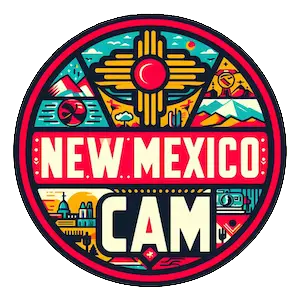Organ Pass, NM Weather Cams
Organ Pass Cam
Organ Pass: A Strategic Gateway Through the Organ Mountains
Organ Pass, NM Weather Cams. Situated in the rugged and picturesque Organ Mountains of southern New Mexico, Organ Pass has played a pivotal role in the region’s history, serving as a strategic gateway for travelers, traders, and military expeditions traversing the arid desert landscape.
The Origins of Organ Pass
The Organ Mountains, with their distinctive needle-like spires, have been a prominent landmark in the Chihuahuan Desert for centuries. The pass, a natural corridor through these imposing peaks, was first utilized by Indigenous peoples, including the Apache and Pueblo tribes, who used it as a trade route and hunting ground.
Spanish Exploration and the Camino Real
In the late 16th century, Spanish explorers and missionaries began venturing into the region, seeking new territories and opportunities for expansion. Organ Pass quickly became an important waypoint along the Camino Real, the historic trade route connecting Mexico City with the northern outposts of the Spanish Empire.
One of the earliest recorded passages through Organ Pass was made by Juan de Oñate, the first colonial governor of New Mexico, in 1598. Oñate’s expedition, which included settlers, soldiers, and livestock, traversed the pass en route to establishing the first Spanish settlement in present-day New Mexico.
The Santa Fe Trail and Westward Expansion
As the United States expanded westward in the early 19th century, Organ Pass gained strategic significance as part of the Santa Fe Trail, a vital commercial highway connecting Missouri with the lucrative markets of Santa Fe and beyond.
Traders, pioneers, and settlers braved the treacherous journey through the pass, enduring the harsh desert conditions and the ever-present threat of Native American raids. The pass served as a crucial waypoint, providing a safe haven and a source of water for weary travelers.
The Mexican-American War
During the Mexican-American War (1846-1848), Organ Pass became a critical military objective as American forces sought to secure control over the Southwest. In December 1846, Colonel Alexander W. Doniphan and his Missouri Volunteer Cavalry, known as Doniphan’s Expedition, passed through the Organ Mountains on their way to engage Mexican forces in the Battle of Brazito.
The grueling march through Organ Pass, with its steep inclines and treacherous terrain, tested the resolve of Doniphan’s troops. However, their successful passage through the mountains allowed them to outflank the Mexican army and ultimately secure a decisive victory.
The Butterfield Overland Mail Route
In the late 1850s, the Butterfield Overland Mail Route, a stagecoach line connecting St. Louis and San Francisco, was established, and Organ Pass once again became a vital transportation corridor.
Stagecoaches laden with passengers, mail, and cargo braved the rugged terrain, often falling prey to attacks by Native American raiders or violent bandits. The Butterfield route operated until the onset of the Civil War in 1861, when it was abandoned due to the threat of Confederate forces in the region.
The Organ Mountains and the Civil War
During the Civil War, Organ Pass and the surrounding mountains played a strategic role as Union and Confederate forces vied for control of the Southwest. In 1862, the Confederate Army of New Mexico, under the command of General Henry H. Sibley, attempted to capture the vital supply depot at Fort Craig, located near the pass.
The Battle of Valverde, fought along the banks of the Rio Grande near Organ Pass, was a Confederate victory, but it ultimately failed to secure control of the region for the Confederacy. The Organ Mountains and their passes remained a contested area throughout the war, with both sides recognizing their importance as supply lines and defensive positions.
The Gadsden Purchase and the Boundary Survey
In the aftermath of the Mexican-American War and the Gadsden Purchase of 1853, Organ Pass became part of the newly acquired U.S. territory. The Boundary Survey, tasked with delineating the new international border between the United States and Mexico, passed through the region in 1855.
The survey party, led by Major William H. Emory, faced numerous challenges as they mapped the rugged terrain and navigated the treacherous passes of the Organ Mountains. Their detailed records and sketches provided invaluable insights into the geography and natural resources of the area.
Modern Exploration and Recreation
Today, Organ Pass remains a popular destination for outdoor enthusiasts, hikers, and history buffs alike. The Organ Mountains-Desert Peaks National Monument, established in 2014, protects this remarkable landscape and its rich cultural heritage.
Visitors can retrace the steps of historic figures, marvel at the towering spires of the Organ Mountains, and explore the remnants of Native American settlements, Spanish missions, and military outposts that dot the region. The pass itself, with its winding trails and breathtaking vistas, offers a glimpse into the hardships and triumphs of those who traversed this demanding terrain throughout history.
From its earliest inhabitants to the modern-day adventurers, Organ Pass has remained a testament to the enduring spirit of exploration and the human drive to conquer the challenges posed by nature’s most formidable barriers.
For more information, visit the official Organ Pass, New Mexico website.
